#remoteisland
Text
A land where babies swim before they walk - this is the world of the Moken sea gipsies and remote island getaways.
In the 1946 book Biggles Delivers the Goods by Captain W.E. Johns, the goggled hero flies over the Burmese coast and Andaman Sea as he conquers the Japanese army. Looking down, he sees “Below the aircraft, like a string of green beads dropped carelessly on blue velvet… the islands of the archipelago, lonely, untouched by civilisation, each hiding beneath its tangle of jungle, a wealth of animal, bird, and reptile life...”
This part of the world remains a largely unexplored lost kingdom where nobody knows all the species living in the dense jungle and in the turquoise waters. A pristine utopia of primal seclusion which is irresistibly lovely, and one of the last few paradises on earth. Here everything is alive, even the shells are crawling.
Welcome to Myanmar’s Myeik Archipelago! Formerly known as the Mergui Archipelago, this is a place where adventure seekers can make their dreams come true. This is a place for explorers. A place for those who are yearning for destinations that still remain untouched, immaculate and unspoiled by mass tourism. This is a place where tourism is a brand-new terminology.
The Myeik Archipelago is an immense area with more than 800 islands stretching for 400 km (248 mi) along the long narrow Kra Isthmus, part of the Tanintharyi Region in the extreme south of Myanmar. To the north is Myanmar’s Mon State, and further south are the idyllic Thai islands of Surin and Similan.
Mainly composed of limestone and granite, the islands vary in size from small jagged rocky outcrops to islands many miles in diameter. The consistently pleasant temperatures, with average lows between 20-24°C (68-75°F) and average highs ranging between 28-33°C (82-91°F), are ideal conditions for tropical wildlife to thrive.
Most of the islands are covered in very dense jungle that drops into the turquoise waters, interrupted only by brilliant white powder-soft sandy beaches and rocky headlands. Some have tidal rivers and are fringed by large mangrove forests where fish and other sea creatures flourish. Others are surrounded by coral reefs and beds of seagrass, adding to the region’s diverse fauna and flora.
The majority of islands remain uninhabited and untouched, although some of the larger islands are home to small communities of Burmese fishermen and the Moken people, also known as the Sea Gypsies. A few islands each have a single resort catering to tourists who are mostly well off.
However, the archipelago now faces challenges, including climate change, overfishing, and illegal poaching.
UNESCO recently assessed the Myeik Archipelago against World Heritage Site criteria, concluding that it “... forms an ecological system of outstanding biodiversity and integrity. Surveys have recorded 50 globally threatened plants and animals in the Lampi Marine National Park alone …”
While too early to determine the long-term prospects for this fragile ecosystem, it is hoped that the increasing interest in ecotourism will provide an incentive for local authorities to protect the fauna and flora of the reefs and islands before it is too late.
The history of Myeik Archipelago is generally unknown to much of the world. Most stories remain untold.
Most, if not all of the islands in the Myeik Archipelago, remained officially off-limits to foreigners for decades. However in 1997, Thai dive operators gained access to selected dive spots as Myanmar’s military government started lifting travel bans, although strict regulations were kept in place.
When opposition leader and activist Aung San Suu Kyi became state counsellor in 2015, international travellers found it politically and morally acceptable to visit Myanmar. However, during the 2021 military coup she was once again placed under arrest. Still, Myanmar remains open to tourists who are warmly welcomed by the locals, especially those in the tourism industry.
The vast majority of islands remain undiscovered by tourists with many inhabited only by colourful wildlife and the odd fishing village.
While tourism has increased since the late 1990s, the lack of infrastructure means only a few travellers visit the area, mainly via chartered yachts and live-aboard dive boats from Thailand or even Indonesia. However, the region is poised for change as the almighty tourist dollar is knocking on the door!
PEOPLE OF THE ARCHIPELAGO
The indigenous people guarding this island paradise refer to themselves as Moken, but they have several names. In Myanmar, they are generally known as Salone, while the Thais call them Chao Lay. They have also been dubbed “Sea Gypsies” or “Sea Nomads” by outsiders. Some Western travel writers have described the Moken as a “semi-aquatic race inhabiting a tropical haven”.
The Moken, who have lived undisturbed for centuries among these islands, are one of Myanmar’s most distinct ethnic groups. Over hundreds of years they have adapted to living on the water and moving to land during the rough monsoon season where their huts are built close to shore so they can constantly monitor the sea and their boats.

Considered hunter-gatherers rather than fishermen, they hunt big fish from their boats using three-pronged spears rather than the destructive nets favoured by traditional fishermen. Masters of free diving, they can hold their breaths for a very long time while perfectly focusing their vision underwater. Women collect a variety of molluscs, sea urchins and sea cucumbers from the bottom of the sea, often as deep as 12 metres (40 ft).
While the Moken believe one should not be greedy and only take from the sea what they need, they also believe that resources are infinite.
Often they embark on multi-day fishing trips, though the trend is towards shorter trips, due to decreasing numbers of traditional kabang or big houseboats. As the government no longer allows cutting of the thickest trees needed to construct them, the Moken increasingly harvest fish and other food items closer to the coastline from smaller dugout canoes.
Traditionally they moved from one island to another once resources were replenished. Nowadays they increasingly inhabit small permanent villages on the islands while their population—currently estimated at between 2,000 and 3,000—continues to slowly grow.

The seas they presided over for centuries are now getting busier with large trawlers and squid boats infringing on their territories.
The Moken can’t compete for the limited resources, although the Myanmar government is trying to control the influx of foreign boats. As competition increases, it is not clear how they can continue to live a sustainable existence, so they are likely to increasingly abandon their traditional lifestyles and turn to the lucrative tourist trade.
When I recently visited a Moken village on a remote island, I found several stalls selling foods and candies, much of it packaged individually in plastic, with lots of locally-produced dried fish also available. Their customers are local Moken as well as Burmese from nearby islands and the mainland.
The Moken kids are friendly and welcoming towards visitors, though some gasp in shock—perhaps they have never seen Westerners. Their faces are painted almost comically with the traditional Burmese thanaka, a yellowish-white paint made from ground bark.
They are very much at home in the water and I could easily believe these kids really can swim before they can walk.
Some adults smoke locally-rolled green-coloured cheroots, a potent Burmese cigar, as they lazily sit outside their homes and shops gossiping about the latest village news.
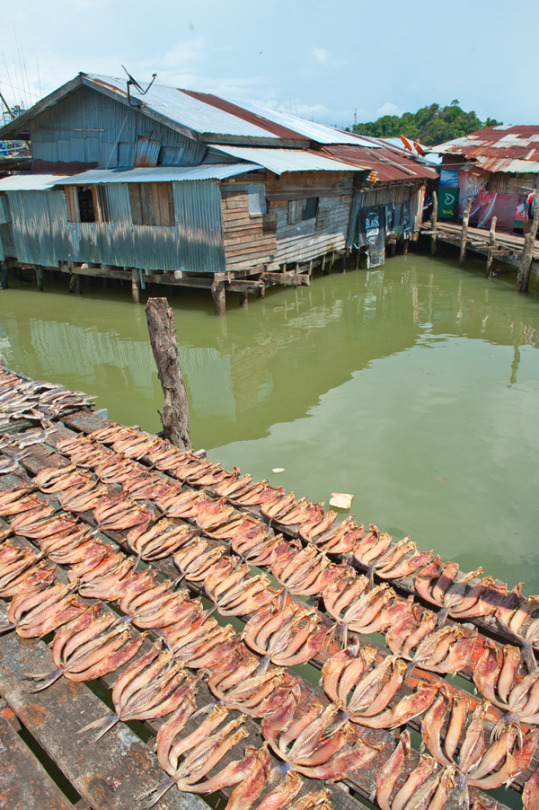

Babies casually sway in little hammocks hanging between palm trees and on the small verandas of the stilted homes. This peaceful existence fits my image of life on a small remote tropical island.
British photographer Cat Vinton spent several weeks in 2009 documenting a Moken family aboard a kabang.
She writes “...their nomadic free spirit, their lack of a routine, their knowledge of the sea and the jungle, their love of nature… these elusive people are born, live and die at sea. The Moken children can swim before they can walk. Their philosophy focuses on pride in the face of scarcity…”.
The lifestyle of the Moken has changed significantly in recent years and is set to change even more as these islands are increasingly opening up to outsiders and tourists.
THE ISLANDS
From high above the archipelago, the islands appear to form three vague strings, spread out over many miles.
Located in the westernmost reaches of the archipelago, about 85 kilometres (53 mi) west of mainland Myanmar and Thailand, Boulder Island is remote and pristine, earning its name from the gigantic rounded boulders scattered along its shores, some stacked into gravity-defying formations like immense stone sculptures.
Beyond its bizarre rocky landscapes, Boulder Island’s interior harbours lush jungle while idyllic beaches tucked into protected coves are scattered along the coast. With no villages or roads, and only one small eco resort, Boulder Island remains virtually untouched by civilisation.
Its isolation and lack of development means clear waters and intact coral, making Boulder Island one of the archipelago’s finest snorkelling and diving destinations. Look out for juvenile black tip reef sharks, sea otters, and large schools of small fish right in the shallows near the beach!

Jungle trails connect all eight beaches—your escape routes to a hidden paradise of beauty and solitude.
Each one reveals new surprises from gravity-defying boulder formations to secluded snorkelling spots and beautiful shells. They share soft white sands and crystal clear turquoise waters. The trails also lead to lookout points for panoramic views over the island.
This rugged and unspoiled island is excellent for birding with a diverse array of bird species—spot the white-bellied sea eagles, Brahminy kites, Nicobar pigeons and many more. The chirpy white-rumped shama will unquestionably wake you up early with its beautiful songs.
Harmless monitor lizards and reticulated pythons also inhabit the jungles, but fortunately, no dangerous animals or insects have been identified making it perfectly safe to explore.
The island’s only accommodation is the privately owned solar-powered Boulder Bay Eco Resort tucked behind the lush fish poison trees and screw pines of Boulder Beach. This small, cosy resort was built to sustainably integrate into the island’s ecology.

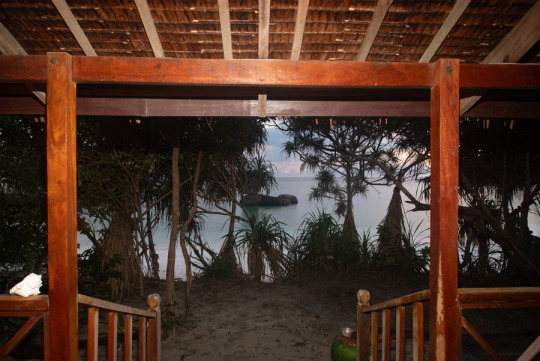
After being invited to visit, I boarded the resort’s boat in Kawthaung, Myanmar’s southernmost town. On the pleasant five-and-a-half hour journey to Boulder Island, we passed many beautiful islands and beaches, mostly uninhabited. A speedboat can be arranged for a faster trip.
As the boat approaches the southern side of the island with its distinctive piled-up boulders in the shallow waters, you will see the resort ‘s well-camouflaged beachfront bungalows peeking behind the trees.
At high tide, you can disembark right onto the beach. During low tide, the boat moors at the concrete jetty which extends beyond the exposed corals. Depending on the conditions, you may need to be chauffeured to the jetty or beach by rubber dinghy or two-person kayak.
The friendly staff will welcome you with an ice-cold drink at the resort’s spacious thatched-roof community centre and check you into your bungalow after a short briefing. With open sea views, the community centre is a place to relax while dining, enjoying the bar, accessing the satellite internet, and playing card games with other adventurers.
Welcome to paradise!
The resort offers eight eco-friendly seafront bungalows with another twelve amongst the trees. Constructed in the traditional Burmese style with wooden frames and walls, and local palm-leaf roofs, none of the building materials other than bamboo have been harvested from the island.

The ample supply of fresh water is pumped from a well and meticulously filtered to ensure it is clean and safe to drink. Close to the adjacent beach is the large Yoga Centre, a versatile space for yoga, meditation, meetings, and any other events.
Make use of the resort’s fully equipped dive centre—with a qualified dive instructor, kayaks and snorkelling equipment to explore the surrounding and nearby reefs.
The area has prolific fish and invertebrate life—in the shallower waters, you can expect to see many coral species as well as parrotfish, pipefish, butterflyfish, snapper, grouper and lots of colourful sea anemones with their resident clown-fish.
While diving, you may see shark species such as black-tip and tiger sharks, as well as eagle and manta rays, giant stingrays, octopus, seahorses, frogfish, scorpionfish, ribbon eels, ornate ghost pipefish, schools of barracuda, rainbow runners, tuna, trevally, Spanish mackerel—the list is almost endless.

Alternatively, take a multi-day sea safari on the custom-designed live-aboard Burmese-style junk, the MV Sea Gipsy, ideal for diving, snorkelling, adventure excursions and romantic overnight trips. The tastefully decorated boat features five comfortable open-air gazebo areas on the main and upper deck which are transformed into beds with mosquito nets at night, and two bathrooms with toilets and freshwater showers on the main deck.
The huge sundeck invites guests to sunbathe on the wooden deck chairs or sit back under the stars with a glass of wine. Other areas provide space for relaxing either in the sun or shade.
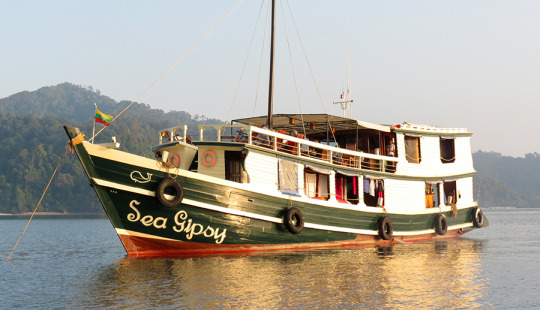
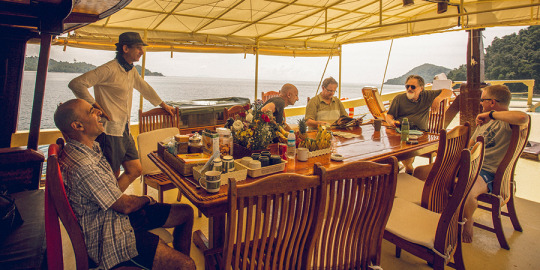
With the diving and snorkelling gear aboard the boat, explore the world below the surface teeming with iridescent reef fish that glitter like jewels and corals glowing with life. The underwater world invites exploration and promises discovery for those who venture into the depths.
The MV Sea Gipsy cruises between several islands where you can stroll along picturesque beaches, try sea kayaking, swim in crystal-clear turquoise waters, and go snorkelling. You may also meet the local inhabitants, such as the Moken.
To experience all the resort has to offer, combine a few days in a bungalow with a few days on board the boat. Note that the resort is closed during the monsoon season when the seas can be rough and rain may fall for hours on end.
Boulder Island stands out among the many islands of the Myeik Archipelago—its natural beauty is breathtaking and offers a unique opportunity to connect with nature, while the Boulder Bay Eco Resort ensures your time on the island is comfortable and unforgettable.
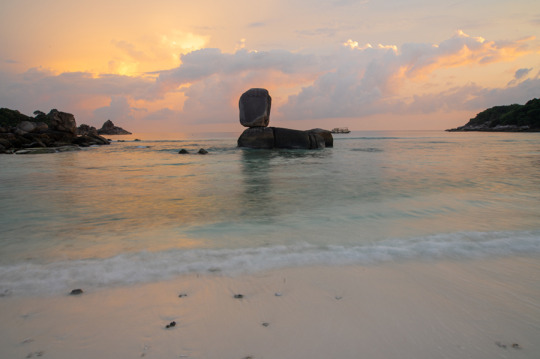
Arguably the most well-known island in the archipelago is also one of its largest. Lampi Island, about 20 kilometres (12 mi) from the Myanmar mainland, is around 48 kilometres (30 mi) long and five kilometres (3 mi) wide. The island is home to the National Wildlife and Marine Park which protects over 1,000 species of animals, plants and marine life in the Myeik archipelago and was declared an ASEAN Heritage Park in 2003.
As Myanmar’s only marine national park, it is rich in biodiversity with numerous plant species associated with its vast mangrove forests. Some of its many bird species are classified as threatened, including the plain-pouched hornbill and Wallace hawk eagle.
Among the more unique birds are the white-bellied sea eagle, Nicobar pigeon, crested partridge, red-throated sunbird, brown-winged kingfisher, Pacific reef heron, emerald dove and more.
Look out for loggerhead and green sea turtles, Sunda pangolin and dugong on and around the island. The region’s diverse range of wildlife also includes the cute spectacled leaf monkey, gibbons, reticulated pythons, monitor lizards, oriental small-clawed otter, lesser mouse-deer, civets, and many more. Sometimes crab-eating macaques can be seen foraging for crabs on the rocky shores.
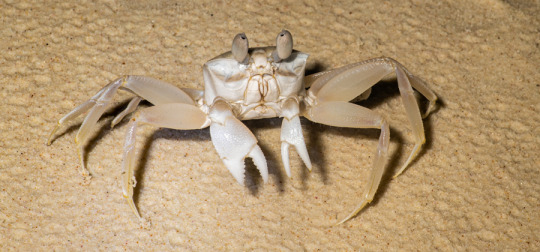
Many globally threatened species are amongst its amphibians, reptiles, sea turtles, mammals, fish, crabs, sea snails and sea slugs, bivalve molluscs, sea cucumbers, seaweed, seagrasses, and 333 species of plankton.
Activities here include canoeing on the two perennial rivers on the west side of the island where the best-conserved mangrove forests are to be found, and hiking in the jungle. While official hiking trails throughout the archipelago are still very limited, if you are adventurous enough to take on the dense forests, you will find hiking through jungles on the islands to be one of the most rewarding experiences in the region.
Visit the traditional Moken villages with houses built on stilts, and join them for diving and snorkelling in the Andaman Sea.

Across a 220 metre-wide (722 ft) channel known as Salet Galet cove at the westernmost tip of Lampi Island is Wa Ale Island. The protective cove is a popular anchorage for fishing boats in the fairly shallow waters, particularly during turbulent weather. A tiny island in the cove is home to a small community of Moken people.
Wa Ale Island is known for its pristine kilometre-long dazzling white-sand beaches, flanked by rocky cliffs and backed by lush evergreen jungle.
The island’s only accommodation is the luxurious Wa Ale Island Resort, creatively constructed with local materials including river stones and reclaimed wood to minimise its impact on the surrounding environment.
Its luxury tented and treetop villas overlook the beautiful beaches on its doorstep, while the restaurant serves Asian-Mediterranean cuisine with ingredients from the resort’s organic garden and seafood from local fishermen who use sustainable fishing methods.
As well as relaxing on the white-sand beaches, recreational activities include snorkelling and scuba diving, hiking through the dense jungle, paddle boarding and kayaking through the inlets of the dense mangroves forests. Kayaking and paddle boarding offer great opportunities to move slowly across the shallows that skirt the enchanted mangrove forests and up the small rivers, while getting a glimpse of the many small creatures living in these shallow protected waters.
For more detail about Wa Ale Island Resort, please refer to GlobeRovers Magazine, July 2018.
KAWTHAUNG—THE GATEWAY
One of the gateways to the Myeik Archipelago is Kawthaung, Myanmar’s southernmost town, separated from Thailand’s Ranong Province by a broad estuary of the Pakchan River. Known as Victoria Point during the British rule of Burma between 1824 and 1948, it is a charming, laid-back town straddling the hills between the Kra Buri River and the Andaman Sea.
Several points of interest include the 21 metre-high (69 ft) Pyi Daw Aye Pagoda on a hill overlooking the town. Built in 1949, the temple features eight meditation niches representing the eight days of the Buddhist week, and 14 Buddha images. About three kilometres (2 mi) further north is the Mey Paw Kyan Pagoda.
Explore the large area of stilted houses along the edge of the river at the northern end of town with a few restaurants and drinking spots. At low tide, the residents scour the muddy riverbed for molluscs and crabs, while at high tide the kids run along the wobbly planks connecting the houses and then jump into the water to play like fish. The people are very welcoming and curious to engage with visitors.
The downtown area has a few small restaurants serving authentic Burmese food, as well as coffee shops and interesting markets. At the most southern tip is the Nagayone Temple right at the water’s edge. Nearby is the Kawthaung Grand Spirit Shrine.
Before or after your island adventure, stay a few days at the lovely Victoria Cliff Hotel and Resort, located on the cliffs just 6.5 kilometres (4 mi) from Kawthaung harbour. The resort’s luxury accommodation includes Ocean View Wings, Lake View Villas, and Hillside Villas, many of which are brand new with exceptionally beautiful interiors and open sea views.
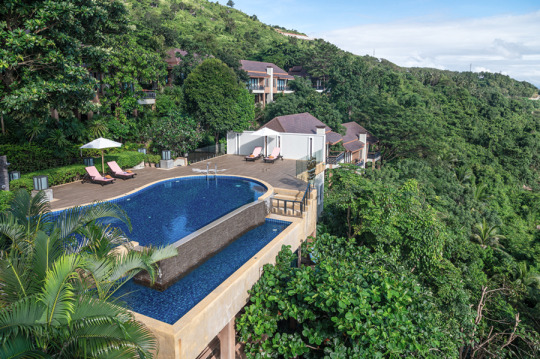
The resort grounds are well-groomed botanical gardens, complete with a lake, swans, a variety of flowering plants, very tall palm trees and incredibly well-maintained giant bonsais.
After a day spent enjoying the resort’s facilities or exploring the southern tip of Myanmar, visit the resort’s Maliwan Spa for a relaxing massage or scrub, or work out at the well-equipped fitness centre overlooking the pool and gardens. Enjoy this large swimming pool set among the gardens or the smaller infinity pool overlooking the sea. The resort can accommodate up to 500 guests for weddings, conferences and celebrations.
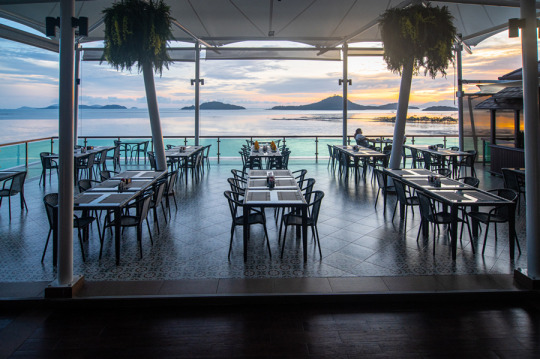
At dusk, relax in the large open-air restaurant with stunning views over the sea and nearby islands while you enjoy top class Burmese, Asian, and Western cuisines, paired with wines, beer or cocktails.
As vibrant sunsets give way to glittering moonlight, you will be astounded by the star-strewn skies at night. The restaurant’s prime location promises to make memories as vivid as the surroundings. Pure bliss!
As our journey through the Myeik Archipelago comes to an end, we leave the untouched beauty of its islands with a sense of awe.
The pristine beaches, dense jungles, and vibrant underwater life have shown us a world that remains largely unexplored, while the warmth of the Burmese villagers and the Moken people have added a human touch to our tropical paradise adventure.
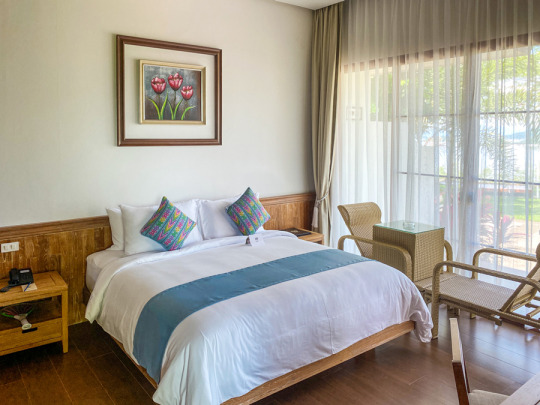
However, the challenges facing this archipelago remind us of our responsibility to protect these natural wonders for future generations.
As we bid farewell, we carry not just memories of scenic beauty, but also a renewed commitment to preserving such magnificent corners of our planet.
Whether you’re an adventurer at heart or simply a lover of nature, the Myeik Archipelago awaits your discovery. So come, explore, and help to keep this paradise unspoiled.
Check out Boulder Bay Eco Resort’s website for more information and contact them to book an unforgettable experience. Alternatively, make contact via [email protected]. An even better way to enjoy these islands is to combine a stay at the resort on Boulder Island, with a few nights cruising around the islands with their boat, the Sea Gipsy. For more information, check the website of the island safaris or write to them at [email protected].
To stay at the Victoria Cliff Hotel & Resort, email them at [email protected].
Also, check out my complete guide to the beaches of Myanmar and my list of Myanmar’s 10 best beaches.
#islands#remoteislands#andaman sea#myanmar islands#boat cruises#Eco resorts#Asian Resorts#Boulder Island
0 notes
Photo
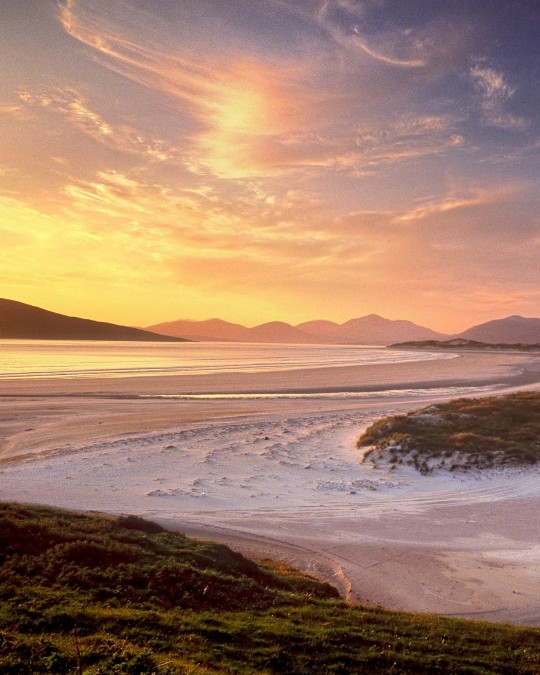
Scotland Fix of the Day: Travelers to Scotland who come to me for advice have learned that I may well send them farther afield. One of my favorite suggestions? Take a fling and head for the Outer Hebrides, to Lewis and Harris. These islands rate pretty high on the off-the-beaten-track scale because travel there involves a couple of ferry connections, a sure way to cut the number of fellow travelers you’ll encounter. My favorite route departs from Ullapool and takes you out to bustling Stornoway on the Isle of Lewis. From there it’s an hour drive out to the rugged west coast to places like Uig Bay and Mangersta Beach. You can include the Butt of Lewis, too, where you’ll find on of those iconic Stevenson lighthouses. Central to any Lewis journey will be the Callanish Stones — second only to Stonehenge amongst Neolithic monuments (and much more accessible.) Then drive down to the Isle of Harris. (You’ll notice that Lewis and Harris are not actually separate islands, but they are distinct territories in the minds of of the islanders and I wouldn’t argue about it with a local in the pub.) Harris is more mountainous than Lewis and has some of the world’s greatest beaches, like Luskentyre Strand. The road there from Tarbert meanders through the hills before descending to a glorious road that hugs the west coast. You’ll loop on down to Leverburgh, continue east to Rodel (where you can see the old church with islands strewn beyond to the south.) Then swing north through a moonscape where the road twists and turns to snake through boulders and down into fishing villages with names like Scadabay and Plocropol. Continue on and you are back in Tarbert where you can catch the other island ferry that goes back to the Isle of Skye. Taken all together this is a stunning journey; everyone comes back raving. #scotland #outerhebrides #islandjourney #bestofscotland #hiddenscotland #scotland_highlights #ig_scotland #visitscotland #scotlandgreatshots #scotland_greatshots #igersscotland #unlimitedscotland #scotlandtravel #thescottishcollective #simplyscotland #moodyscotland #scotlanddreams #offthebeatentrack #travelphotography #unesco #worldheritage #remoteislands #historicscotland — view on Instagram https://ift.tt/8sWUL3l
205 notes
·
View notes
Video
youtube
Tristan sounds just about right at the moment...
#tristandacunha #remoteliving #remoteisland
Life on Tristan da Cunha – the World's Most Remote Inhabited Island
0 notes
Photo

A distant shore
29,7 x 42cm, ink on paper, Kevin Lucbert, 2021
238 notes
·
View notes
Photo
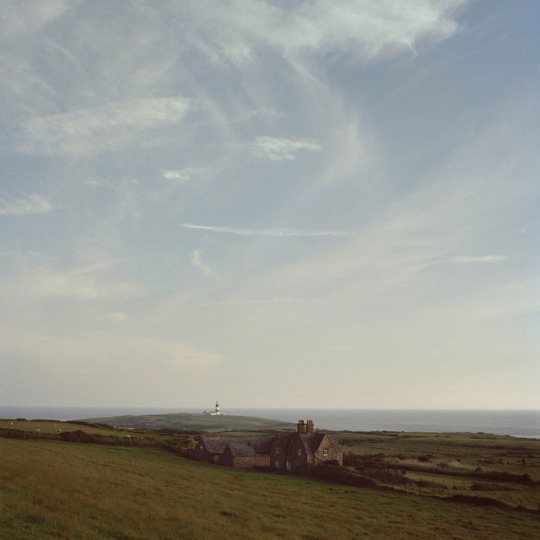
Extreme conditions, loud birds and fresh food by boat – could you live on a remote island?
https://thisispaper.com/Guardian-Extreme-conditions-loud-birds-and-fresh-food-by-boat-could
37 notes
·
View notes
Video
youtube
Forget clear blue waters, this remote island has giant lizard battles
If your idea of a great getaway is traveling to a place where you can watch two truly giant lizards engage in some serious claw-to-claw combat, then Indonesia’s Rinca Island may be for you.
#geobeats#Travel#Destination#lizards#giantlizards#combat#indonesia#island#indonesianisland#komododragons#venomous#remoteisland#indonesiatourism#greatgetaways#biggiantlizards#lizardsvideos#lizardsfighting#rincaisland#bluewaters#amazingtravelplaces#amazingstories
3 notes
·
View notes
Photo
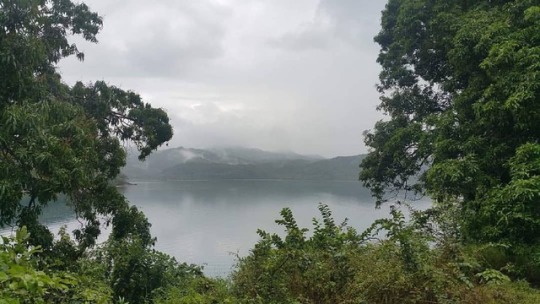
Even on days with bad weather everything still maintains its beauty 🌳🌲🌳 #islandlife #remoteisland #remoteislandliving #ocean #windowview #nature (at Galoa, Kadavu) https://www.instagram.com/p/Bx6vA9EFbUm/?igshid=sy82d3mihril
1 note
·
View note
Photo





Tristan da Cunha, world’s remotest island 🌴
43 notes
·
View notes
Photo

The Isle Of Barra // A Very Happy Organic Free Range Sheep
#barra#isleofbarra#hebrides#outerhebrides#visitouterhebrides#hebridean#scottishcoast#scottishislands#westernisles#desertisland#deserted#scotland#westcoast#bestcoast#westcoastbestcoast#scotlandshots#aweebitscottish#islandlife#islandview#remoteisland#greatbritain#soundofthesea#seaside#atlantic#atlanticocean#northatlantic#organic#freerange#sheep#countingsheep
1 note
·
View note
Photo
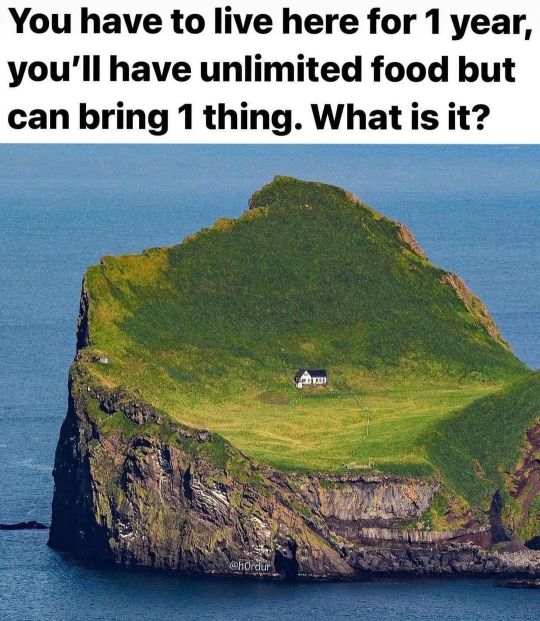
Daydream a bit. #JustImagine #WhatIf #NameOneThing #RemoteIsland #Daydream #Froggy1003 (at Froggy 100.3) https://www.instagram.com/p/CYCq4CkFZoD/?utm_medium=tumblr
0 notes
Text
Spoil yourself and stay a few days or weeks on this remote idyllic island! More info at https://boulderasia.com

0 notes
Text
. 休日は そばに三線、オリオンビール。 #沖縄そば #スパム #ポークランチョンミート #沖縄グルメ #ゴーヤーちゃんぷるー #京都 #休日 #okinawasoba #holyday #spam #remoteisland #沖縄 #海 #オリオン ..
. 休日は そばに三線、オリオンビール。 #沖縄そば #スパム #ポークランチョンミート #沖縄グルメ #ゴーヤーちゃんぷるー #京都 #休日 #okinawasoba #holyday #spam #remoteisland #沖縄 #海 #オリオン ..
@nan_kuru_713
この投稿をInstagramで見る
Yukio(@nan_kuru_713)がシェアした投稿
.
休日は
そばに三線、オリオンビール。
#沖縄そば #スパム #ポークランチョンミート #沖縄グルメ #ゴーヤーちゃんぷるー #京都 #休日
#okinawasoba #holyday #spam #remoteisland
#沖縄 #海 #オリオンビール #名護 #沖縄旅行 #珊瑚 #素潜り #三線 #沖縄フォト部
#okinawa #japan #beach #ocean #sea #orionbeer #blue #diving #okinawagram #okinawaphotoclub

View On WordPress
#beach#blue#diving#holyday#japan#ocean#okinawa#okinawagram#okinawaphotoclub#okinawasoba#orionbeer#remoteisland#sea#spam#オリオンビール#ゴーヤーチャンプルー#スパム#ポークランチョンミート#三線#京都#休日#名護#沖縄#沖縄グルメ#沖縄そば#沖縄フォト部#沖縄旅行#海#珊瑚#素潜り
0 notes
Photo
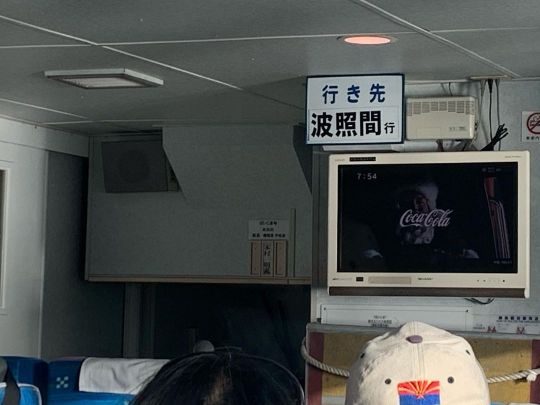
I'm going sightseeing in Hateruma Island! 波照間島へ行ってきます! #haterumaisland #remoteisland #ishigakiisland #sightseeing #onvaation #波照間島 #離島 #石垣島 #観光 #休暇中 (ユーグレナ石垣港離島ターミナル) https://www.instagram.com/p/CHv-464p6VI/?igshid=1wkaduu1ciwae
0 notes
Video
youtube
Covid-19 effects on a remote island in Orkney
https://youtu.be/ncc6Qf5Scps via @youtube
0 notes
Photo
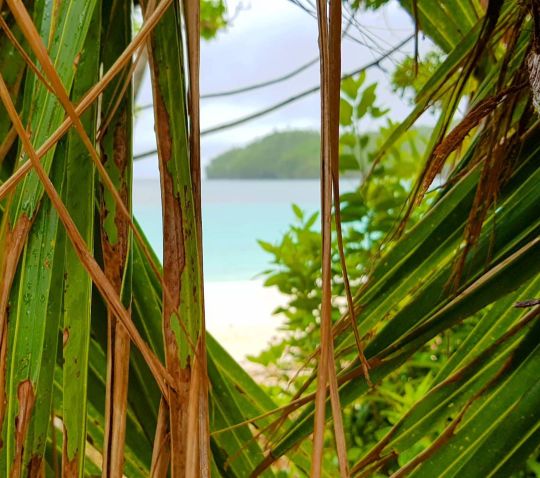
The Philippines has hundreds of beaches for tourists, but these are not the spots with the most beautiful scenery. To truly be dazzled, you have to venture into remote areas where locals live in idyllic settings, in huts built by hand with what the island offers, in a traditional way. Where nature is wild and pure, where peace reigns and luxury does not matter. These islands of volcanic origin, waterfalls hidden in the middle of the jungle and desert beaches are the last refuge on Earth
@zeflorestravelphotography
https://www.instagram.com/p/CEh5G_zAFgM/?igshid=sj1bunh9qvty
#beachvibes#palmtrees#tourists#remoteisland#idylic#traditional#wild#volcanic#waterfall#hidden#secret#refuge#earth#beautifullandscape#cloudscape#discoverearth#discoverglobe#discoverlandscape#exploretheglobe#ig_landscape#landscape_captures#landscape_hunter#landscape_lovers
0 notes
Text
Life on Tristan da Cunha – the World’s Most Remote Inhabited Island - This mini-documentary follows Stewart McPherson’s journey to Tristan da Cunha, the most remote inhabited island in the world - Learn More...
0 notes